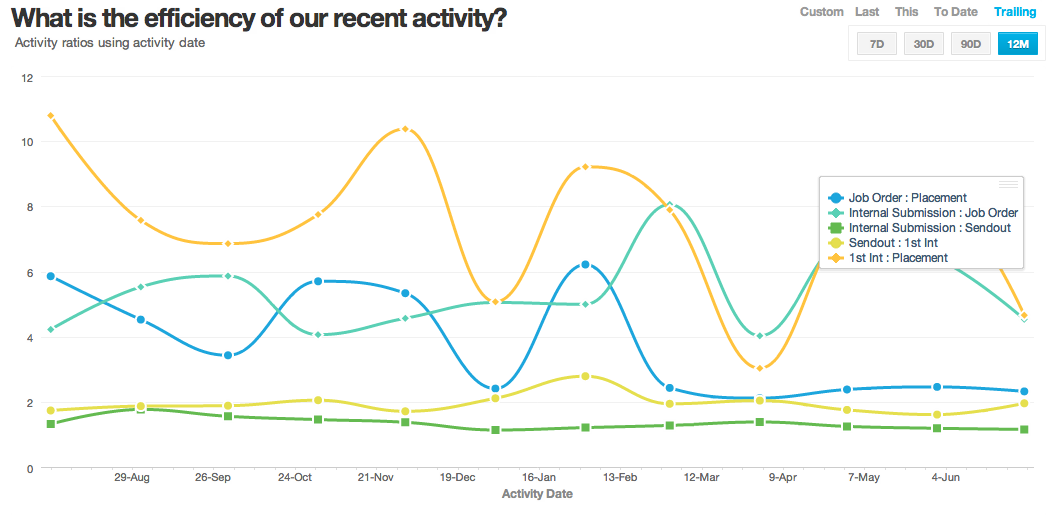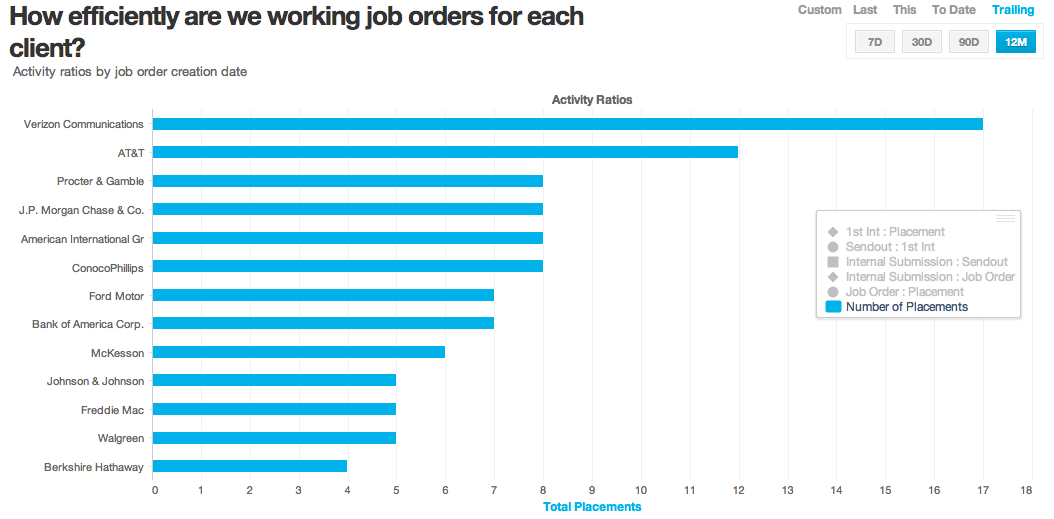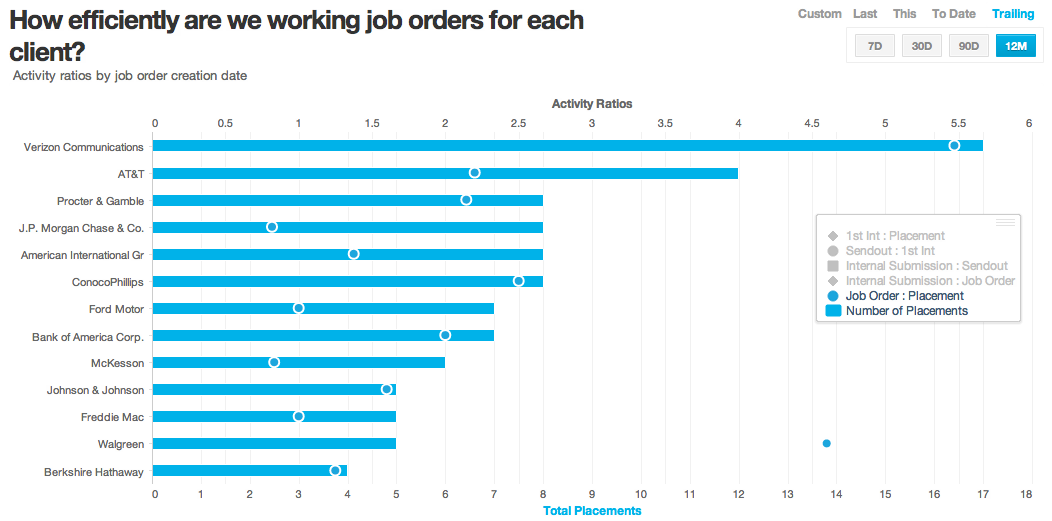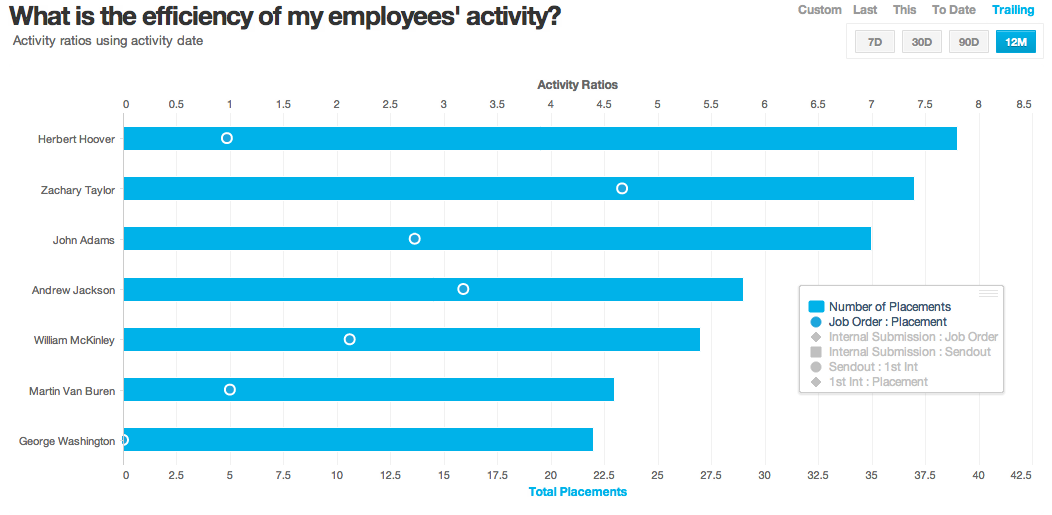Activity Ratios: Math That’s Actually Useful
Remember calculus? When’s the last time you pointed at a placement you made and said “see that? Calculus!” Probably just a handful of times, right? Maybe some of the math you slept through in high school isn’t completely relevant to your current profession, but let’s take a closer look at one area of math that might help you close more deals: Ratios. “In mathematics, a ratio is a relationship between two numbers of the same kind, usually expressed as “a to b” or a:b.” – Wikipedia In theory, ratios show you a comparison of two things. In practice, it can look like this:

The ratios of your various recruiting activities are important barometers of how efficiently you are working, as well as actionable information to improve your bottom line. Let’s look at a couple ways that Activity Ratios can help you find wins. “Where’s the easy money?” Remember back during elementary school (or Freshman year, I won’t judge) when you realized that 6+6+6+6+6 was the same as 6×5? Life got easier, didn’t it? Ratios can make your life easier too by revealing how you can work smarter, not harder. Below is a sample data set of how many placements resulted from each client: As you can see, Verizon Communications is beating out AT&T to provide the most number of placements. So they’re the best client for your business, right?
Well, let’s throw in a ratio of Job Orders to Placement on this chart:


Now you see how high that ratio is for Verizon compared to AT&T. It takes a lot more Job Orders for every placement made, meaning you have to work a lot harder for Verizon placements. So if you knew you had to work twice as hard for one client than for another, and deal revenue being equal, where would you want to spend more of your time? How much more effectively could you be working if you spent time on lower JO:placement ratio clients instead? “Why isn’t Frank closing as many deals as Joe?” Remember when you and your friends tried to copy off the smart kid in math class to ace that algebra test? Back then, that’s called cheating. These days, seeing how your best employee works and copying his/her methodology is just good business. Ratios can illuminate their best work habits and give you tangible examples of why they are winning. Below is a chart of employee activity:

Zachary Taylor is neck and neck with Herbert Hoover in terms of placements made. Let’s take a look at their efficiency, again Job Order to Placement:

Not only is Hoover winning in total placements, his efficiency is much better than Taylor. In fact, Taylor’s JO:placement ratio is much higher than the rest of your employees. He’s just not being that efficient. Clearly, Taylor is a good employee; he’s second in placements made. But let’s say he had the efficient ratio of Hoover, or any other employee. His numbers would be much higher. In seconds, you’ve identified a very specific problem area in one of your best employees, giving him actionable advice that he can use to close more deals. Also note the legend in the charts above letting you see many other ratios including Sendout to First Interview, First Interview to Placement, etc, allowing you to pinpoint areas of inefficiency. Know Your Ratios With a clear view of your ratios, you can answer a slew of business questions to improve your process, including:
- “How many calls, emails, or resume sendouts do I need to hit quota?”
- “Who are my most difficult clients?”
- “Is the quality of our incoming opportunities trending better over time?”
- “Is my company, as a whole, learning to be more efficient?”
Crazy what a little math can do for you, don’t you think?
This Bullhorn Blog post was written by Robert Woo. Robert Woo serves as Marketing Manager at InsightSquared. You can read more of his analytic entries at InsightSquared.com.